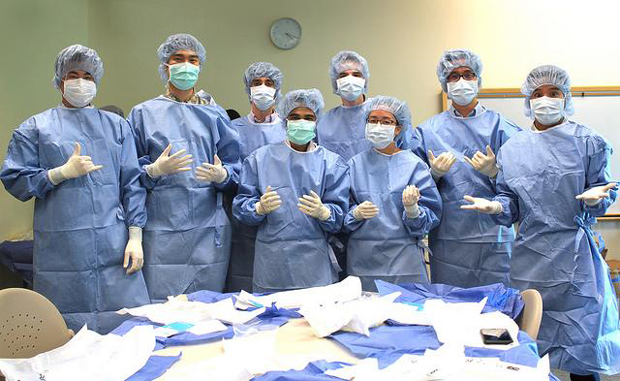

The John A. Burns School of Medicine (JABSOM) is among the top medical schools in the country in several key areas, according to newly released data from the Association of American Medical Colleges.
The University of Hawaiʻi medical school excels in the number of its graduates who enter training in primary care medicine. JABSOM placed better than 90 percent of all other accredited medical schools in the percentage of students choosing primary care.
JABSOM is very strong in retaining its graduates after training to practice in Hawaiʻi, performing better than 75 percent of other medical schools in North America at generating its state’s own physician workforce.
Both the number of students who choose primary care specialties and the number who remain or return to treat patients in Hawaiʻi after their training are critical to stemming the growing shortage of physicians in the state.
“With Hawaiʻi some 500 physicians short of the number it should have for its population, we are exceedingly pleased that JABSOM continues to show sustained growth in producing the kinds of doctors we need the most—those in primary care—and that a significant percentage of the doctors we train stay here in Hawaiʻi to practice,” said School of Medicine Dean Jerris R. Hedges.
Additionally, JABSOM is in the top 15 percent of medical schools whose graduates intend to care for underserved patients. The school ranked near the top for its diversity among MD students and faculty and in providing learning experiences that include emphasis on cultural competency and health inequities.
The Association of American Medical Colleges data also shows value for Hawaiʻi families. Almost 9 out of 10 JABSOM students are kamaʻaina, and they graduate with less medical student debt than that carried by students at 90 percent of U.S. medical schools.
The specific figures
Diversity
- JABSOM is near the top in women graduates.
- It ranks in the top 10 for its percentage of women faculty (48.8 percent).
- On average, just over 11 percent of its MD students are of Native Hawaiian or Pacific Island descent.
Quality of medical education
- JABSOM is in the top 9 percent of schools as judged by each school’s graduates.
Primary care
- JABSOM is in the top 10 percent of accredited U.S. medical schools for producing doctors focusing on primary care (internal medicine, family medicine, general practice, pediatrics).
Producing doctors for Hawaiʻi
- JABSOM is in the top 23 percent of schools, with almost half (45.5 percent) of its graduates practicing in state within 10 years (to fully account for out-of-state post-MD school training and relocation factors).
Treating underserved patients
- JABSOM is in the top 15 percent of medical schools preparing students to meet the needs of the community for underserved care, with 35.2 percent of JABSOM graduates intending to care for underserved patients.
Value
- The average educational debt of JABSOM graduates is $49,100. That is among the lowest educational debt among medical schools in the nation.
—By Tina Shelton

